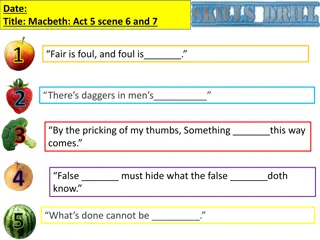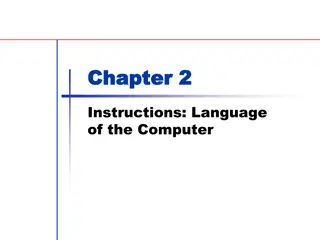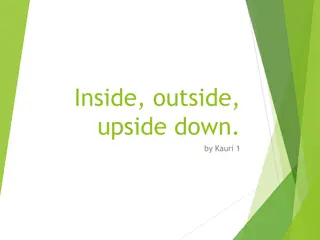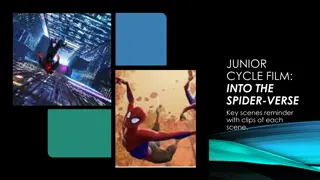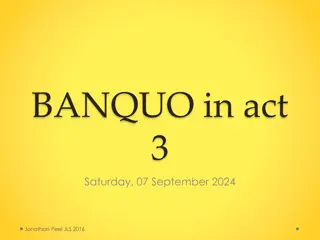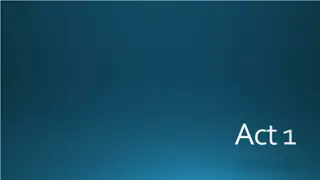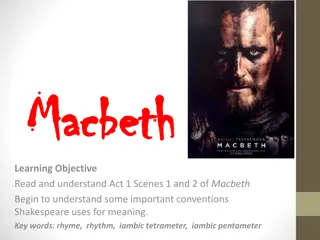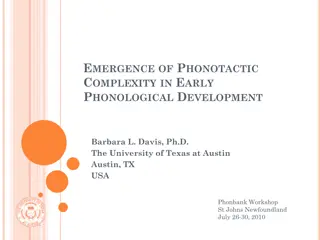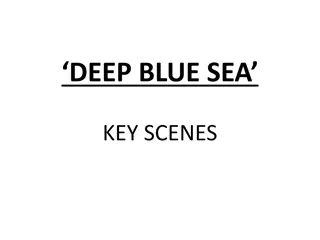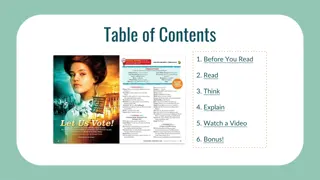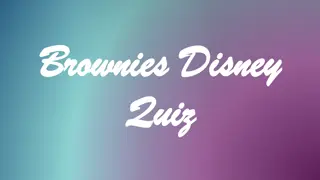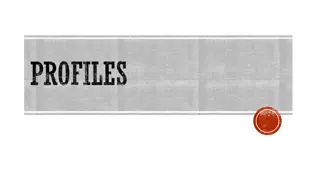Inside Look at PhonBank: Behind-the-Scenes Operations
Explore the intricate workings behind PhonBank, where a dedicated team handles software development, data preparation, testing, and more to enhance language acquisition. Meet the key contributors and discover the efforts invested in acquiring and sharing child language data for research purposes.
Download Presentation

Please find below an Image/Link to download the presentation.
The content on the website is provided AS IS for your information and personal use only. It may not be sold, licensed, or shared on other websites without obtaining consent from the author. Download presentation by click this link. If you encounter any issues during the download, it is possible that the publisher has removed the file from their server.
E N D
Presentation Transcript
PhonBank Behind the Scenes Carla Peddle
PhonBank: Behind the Scenes Outline Sneak peak into what goes on behind the scenes of PhonBank Accomplishments we have made Challenges we face; and Improvements for the future
Phon & PhonBank: Behind the Scenes Phon and PhonBank are already being used in the field of language acquisition Before the software and data are released to the field there is a lot of work behind-the-scenes: developing software testing software preparing data for PhonBank
Phon & PhonBank: Behind the scenes 1. Work related to Phon development: feature set (identify all characters in the field) dictionaries (English, French, Catalan ) 1. Testing the application: segmentation multiple-blind transcription syllabification & alignment inventory functions 1. Manual: writing & editing implementing changes with Phon updates 1. Big work preparing PhonBank Projects
Phon & PhonBank: Behind the scenes Phon is designed to handle the entire workflow associated with new child language data (from segmentation to searching) The main goal of PhonBank is to acquire existing child language data and share them with the field Optimally data should: be well transcribed have clear media recordings
Phon & PhonBank: Behind the scenes Many team members play different roles to make Phon & PhonBank efficient Yvan & Greg mostly Phon Brian mostly PhonBank Carla on middle grounds between Phon and PhonBank
PhonBank: Behind the scenes My work happens at MUN while Yvan travels promote Phon to researchers; and recruit new research contributors to PhonBank
PhonBank: Behind the scenes New research contributions create more work: 1. Specific research questions changes to the application more testing 1. Nearly all new data are formatted to comply with the exacting standards of PhonBank xml
PhonBank: Behind the scenes With large influxes of work, we hire student research assistants Most of the PhonBank work is basic but demands: patience diligence; and attention to detail Looking at the bigger picture VERY REWARDING!
PhonBank: Behind the scenes Since each project is unique and the original formatting of the projects differ, there is a distinct set of steps involved with preparing each project for PhonBank Project Name Original Format Dutch-CLPF ChildPhon Dutch-Zink LIPP English-Davis LIPP English-Inkelas Excel English-Stanford CHILDES French-Kern LIPP French-Stanford CHILDES German-Stuttgart WaveSurfer German-TAKI WaveSurfer Japanese-Ota Excel Japanese-Stanford CHILDES QcFrench-GoadRose ChildPhon Romanian-Kern LIPP Swedish-Stanford CHILDES Tunisian-Kern LIPP
PhonBank: Behind the scenes Ultimate Goal: have compatible CHAT and Phon files for all of the PhonBank projects 1. Convert all data to the CHAT format 2. Subject data to full quality control through CHAT2XML verification system 3. Align any audio to transcript at the utterance level: accurate playback acoustic analysis 4. Import projects into Phon
PhonBank: Behind the scenes Most original transcript formats are not compatible with PhonBank: LIPP ChildPhon Excel WaveSurfer In most of these cases, Brian is the first to work on converting non-CHAT data into the CHAT format
PhonBank: LIPP LIPP projects: Dutch-Zink English-Davis French- Kern Romanian-Kern Tunisian-Kern Brian converts LIPP files to CHAT files freb01.lipp freb01.cha Brian makes CHAT files available to the MUN team
PhonBank: LIPP Once the MUN team receives CHAT and media files: ensure one-to-one correspondence rename one or both set of files All files for a session have: same file name different file-type extension freb01.cha freb01.cha emma 001 23-06-01.mpg freb01.mpg
PhonBank: LIPP Large media files are not always manageable within PhonBank Convert large media files: 1. Open large .mpg media files in the MPEGStreamclip application 2. Export to .mp4 format freb01.mpg MPEGStreamclip freb01.mp4
PhonBank: LIPP Using the CLAN application Linking: the painstaking process of listening to endless hours of media, most often of screaming children, in order to make associations between portions of a media file and corresponding utterances in a transcript Identify start and end time values for small portions of media for utterance playback
PhonBank: LIPP Import linked CLAN transcripts into Phon: CHAT2XML exports CHAT data to an XML file identifies issues preventing the creation of a matching file XML2Phon imports new XML files into Phon
PhonBank: ChildPhon ChildPhon projects: Dutch-CLPF QcFrench-GoadRose Two unrelated applications coincidentally called ChildPhon: 1. Levelt & Fikkert used 4th Dimension based software 2. Goad & Rose used FileMakerPro based software Yvan converts the ChildPhon projects into Comma Separated Value (CSV) files
PhonBank: ChildPhon Dutch-CLPF has sets of media clips for each session One-to-one correspondence between number media clips and the number of records per session Merge media clips by session Export the time values at junctures using Amadeus Pro Use the juncture values as start & end times for media clips Enter start & end time into the CSV files
PhonBank: ChildPhon The next step is to prepare the CSV files for import into Phon Uniform column headers across the project Properly formatted content cells Replace ASCII characters with the Unicode equivalents Greg imports CSV data into Phon
PhonBank: Excel Excel projects: English-Inkelas Japanese-Ota Brian is the first to work on converting projects into CHAT files The MUN team uses the CLAN application to link Japanese-Ota CHAT files to the corresponding media files as with the original LIPP projects (Kern, Davis, etc.)
PhonBank: Excel The English-Inkelas project came to the MUN team as one large CHAT file with data for several recording sessions 1. Split CHAT file by date into 200 smaller session files 2. Check CHAT files against the original Excel file Import both of the projects into Phon using CHAT2XML and XML2Phon
PhonBank: WaveSurfer WaveSurfer projects: German-Stuttgart German-TAKI Brian converts the WaveSurfer files into the CHAT format The CHAT files go to the MUN team Import projects into Phon using CHAT2XML and XML2Phon
PhonBank: Existing CHILDES projects Existing CHILDES projects: English-Stanford French-Stanford Japanese-Stanford Swedish-Stanford Brian makes existing CHAT files available to the MUN team Import projects into Phon using CHAT2XML and XML2Phon
PhonBank: Additional Work We have also worked on other projects which are not yet available from the PhonBank directory: 1. MCF Portugese-Swedish-English trilingual data 2. Chiat English clinical data on velar fronting 3. English-Smith diary study data without media
PhonBank Once all project files have been imported into Phon we upgrade the projects with: Addition of generic IPA Target forms Correction of rogue characters Adjustment of media linkage Verification of syllabification and alignment data for the IPA Target and Actual
PhonBank After a series of spot checks between the original project files and the Phon files, they are ready for: Automated searching Tracking individual queries Exporting data sets Reporting; and Sharing via PhonBank
PhonBank: Accomplishments Most of my work over the last four years: Linking Training student RAs to link; and Supervising student linkers MUN team has linked more than 1000 sessions, most with media files more than one hour in duration For each hour of media we spend more than three hours linking Literally thousands of hours of linking
PhonBank: Accomplishments 15 PhonBank projects ready with the release of Phon 1.4 Encompass: 8 languages 87 participants Nearly 2000 recording sessions Projects are available for download or browsing on the PhonBank portion of the CHILDES database http://childes.psy.cmu.edu/
PhonBank: Challenges Data Formatting Several researchers and data formats creates a challenge for making projects comparable Character compatibility issues arise between old and new versions of the projects Rogue characters cause problems in the transcripts
PhonBank: Challenges Media Issues Laughing, crying or overlapping participants speech makes it difficult to hear, segment, transcribe and link Overlap: MCF-ksm Distance of Research Contributors Difficult to exchange materials Time difference hinders communication Data may be worked on by several people at once
PhonBank: Potential improvements Standardized transcription conventions for all converted corpora Any changes must maintain the spirit of original corpus Corpus versioning, to assist further data annotation without overwriting each other s work
PhonBank: Behind the scenes Thank you very much! Questions? Comments?
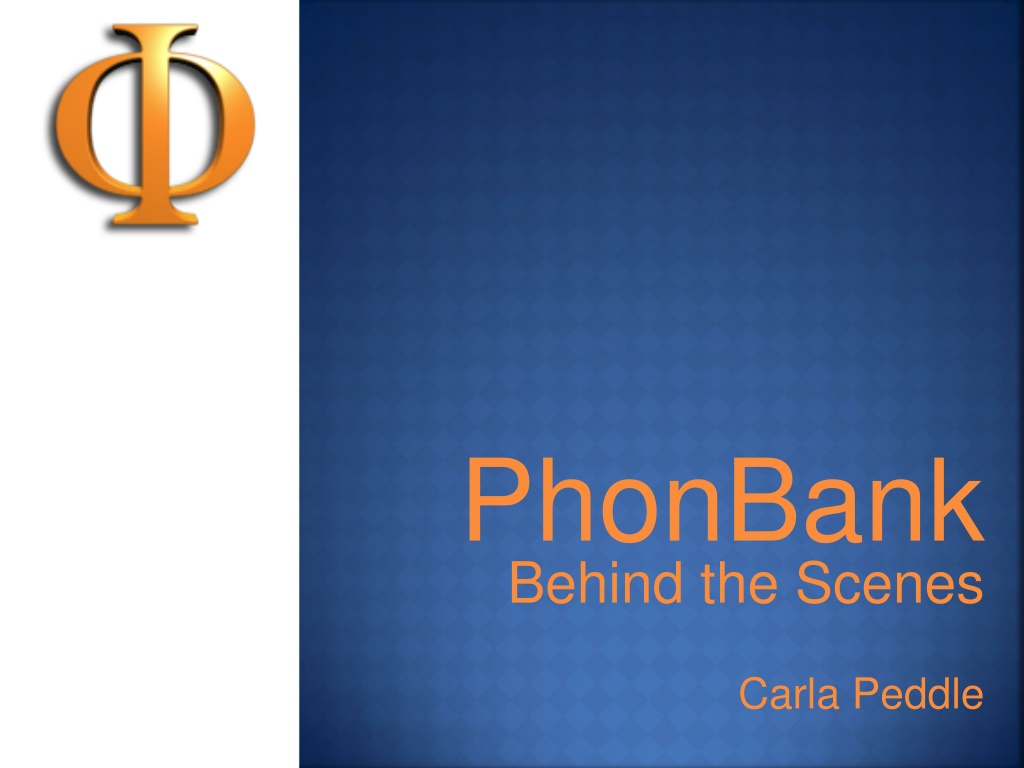
 undefined
undefined






